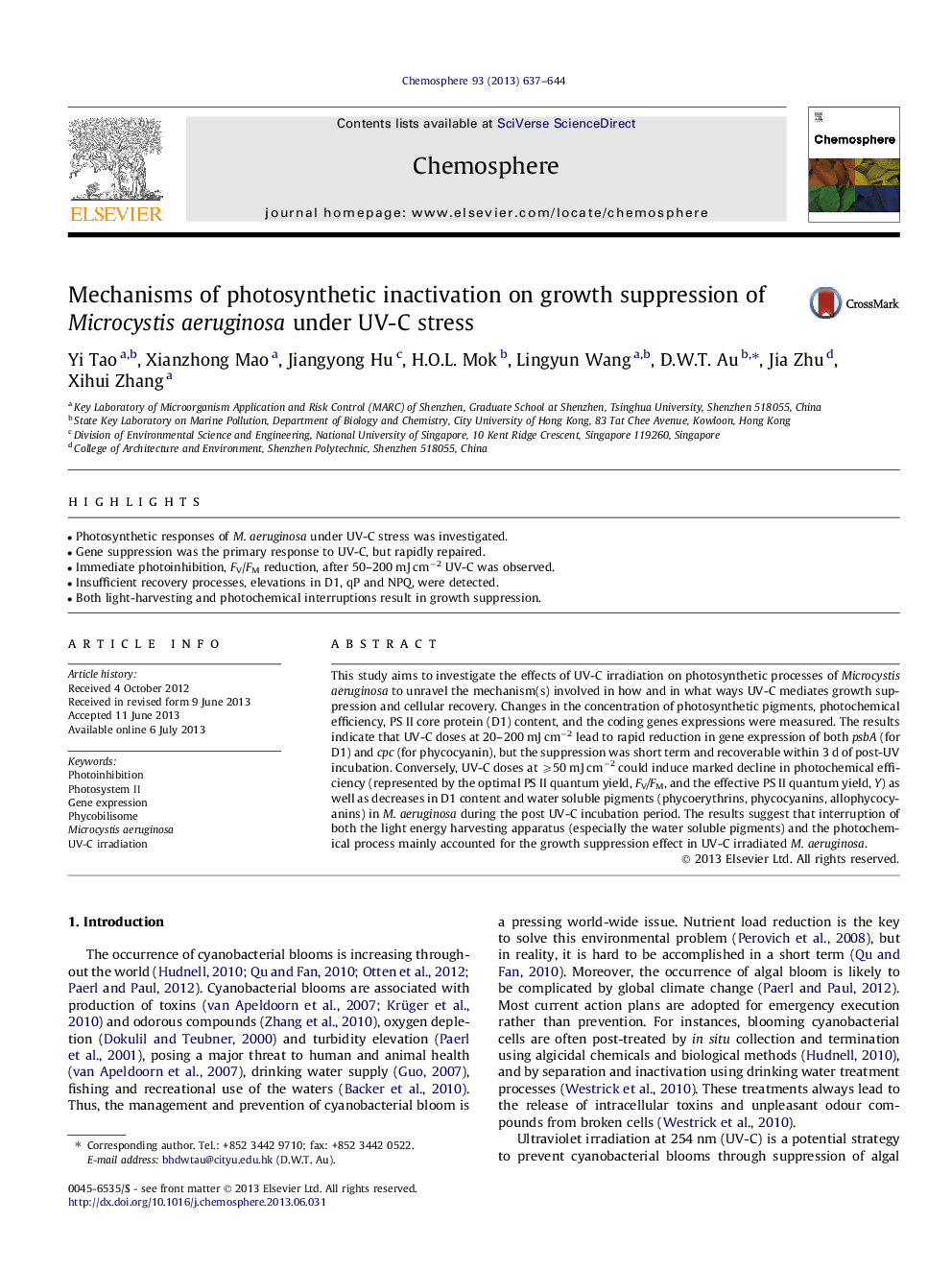| Article ID | Journal | Published Year | Pages | File Type |
|---|---|---|---|---|
| 4409222 | Chemosphere | 2013 | 8 Pages |
•Photosynthetic responses of M. aeruginosa under UV-C stress was investigated.•Gene suppression was the primary response to UV-C, but rapidly repaired.•Immediate photoinhibition, FV/FM reduction, after 50–200 mJ cm−2 UV-C was observed.•Insufficient recovery processes, elevations in D1, qP and NPQ, were detected.•Both light-harvesting and photochemical interruptions result in growth suppression.
This study aims to investigate the effects of UV-C irradiation on photosynthetic processes of Microcystis aeruginosa to unravel the mechanism(s) involved in how and in what ways UV-C mediates growth suppression and cellular recovery. Changes in the concentration of photosynthetic pigments, photochemical efficiency, PS II core protein (D1) content, and the coding genes expressions were measured. The results indicate that UV-C doses at 20–200 mJ cm−2 lead to rapid reduction in gene expression of both psbA (for D1) and cpc (for phycocyanin), but the suppression was short term and recoverable within 3 d of post-UV incubation. Conversely, UV-C doses at ⩾50 mJ cm−2 could induce marked decline in photochemical efficiency (represented by the optimal PS II quantum yield, FV/FM, and the effective PS II quantum yield, Y) as well as decreases in D1 content and water soluble pigments (phycoerythrins, phycocyanins, allophycocyanins) in M. aeruginosa during the post UV-C incubation period. The results suggest that interruption of both the light energy harvesting apparatus (especially the water soluble pigments) and the photochemical process mainly accounted for the growth suppression effect in UV-C irradiated M. aeruginosa.
